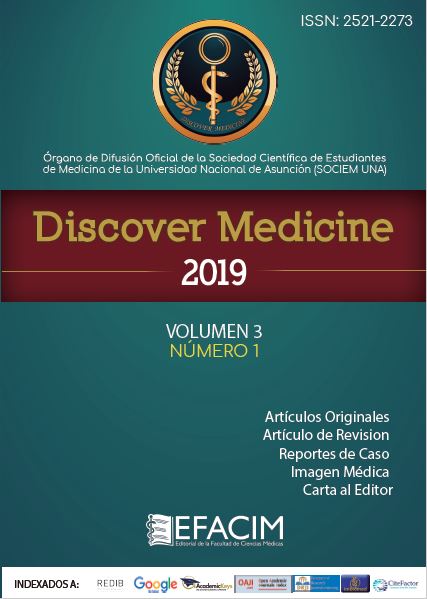Resumen
Introducción: La yerba mate es una infusión muy popular producida y consumida en Argentina, Brasil, Chile, Paraguay y Uruguay. Se procesa a partir de hojas y tallos de Ilex paraguariensis.
Objetivo: analizar los efectos del extracto de Ilex paraguariensis sobre la cristalización de ácido úrico en un modelo in vitro en presencia y ausencia del extracto de Ilex paraguariensis.
Métodos: Ensayo experimental de fase pre clínica en el que se evaluaron muestras pareadas determinando las variaciones registradas entre la medición basal a tiempo cero y a los 30 minutos de número de cristales, dimensiones y número
de agregados formados. Los resultados fueron analizados empleando la prueba estadística de los rangos con signo de Wilcoxon.
Resultados: Los resultados del ensayo control mostraron un aumento del número, agregados y tamaño de los cristales. En el ensayo con extracto de Ilex paraguariensis a concentración al 10%, los resultados mostraron tendencia a la disminución del número de cristales y de sus dimensiones. En el caso de los agregados llama la atención la escasa formación o incluso la ausencia de agregados de cristales de ácido úrico.
Conclusión: Este estudio podría repetirse con más ensayos incluyendo otras concentraciones y presentaciones comerciales. Los resultados podrían ser indicadores de las posibles propiedades de la yerba mate para combatir la formación, el crecimiento y la agregación de cristales de ácido úrico y, por tanto, una herramienta interesante en el complemento del tratamiento de la litiasis úrica.
Citas
Khan A, Bashir S, Khan SR, Gilani AH. Antiurolithic activity of Origanum vulgare is mediated through multiple pathways. BMC Complement Altern Med. 17 de octubre de 2011;11:96.
Félix Grases Freixedas ACV, Antonia Costa Bauzá MRB. Tipos de cálculos renales. Relación con la bioquímica urinaria. 2001. 1.
Piedras en los riñones | NIDDK [Internet]. National Institute of Diabetes and Digestive and Kidney Diseases. [citado 6 de mayo de 2017]. Disponible en: https://www.niddk.nih.gov/health-information/informacion-de-la-salud/enfermedades-urologicas/piedras-rinones
Archivos Españoles de Urología [Internet]. [citado 26 de mayo de 2017]. Disponible en: http://aeurologia.com/articulo_prod.php?id_art=671814580763
Burris KP, Harte FM, Michael Davidson P, Neal Stewart Jr C, Zivanovic S. Composición y Propiedades Bioactivas de la Yerba Mate (Ilex paraguariensis A. St.-Hil.): Una Revisión. Chil J Agric Res. junio de 2012;72(2):268-75.
Heck CI, de Mejia EG. Yerba Mate Tea (Ilex paraguariensis): a comprehensive review on chemistry, health implications, and technological considerations. J Food Sci. noviembre de 2007;72(9):R138-151.
Claude Bennet, M.D. LG MD. CECIL, Tratado de Medicina Interna. 21.a ed. Vol. 1. Madrid, España: McGraw-Hill;
Grases F, Rodriguez A, Costa-Bauza A. Theobromine inhibits uric acid crystallization. A potential application in the treatment of uric acid nephrolithiasis. PloS One. 2014;9(10):e111184.
Gerardo López-Cruz, Ulises Reyes-Gomez, Pedro Hernández-Cruz. Proteina de Tamm-Horsfall: Implicaciones Clínicas en la Vía Urinaria.
Gallardo-Pérez JC, Esparza-Aguilar M de L, Gómez-Campos A. Importancia etnobotánica de una planta vascular sin semilla en México: Equisetum. Polibotánica [Internet]. 2006
[citado 6 de octubre de 2017];(21). Disponible en: http://www.
redalyc.org/resumen.oa?id=62102103

Esta obra está bajo una licencia internacional Creative Commons Atribución-NoComercial-SinDerivadas 4.0.
Derechos de autor 2023 Rosa María Guillén Fretes, Patricia María Funes Torres, Regina Susana Barreto Romero, Sofía Berenice Cazal Barchello, Mireya Fabiana Feijoo González, Lourdes Judith Paredes Medina, Andrea Jamile Ayala Espinoza
